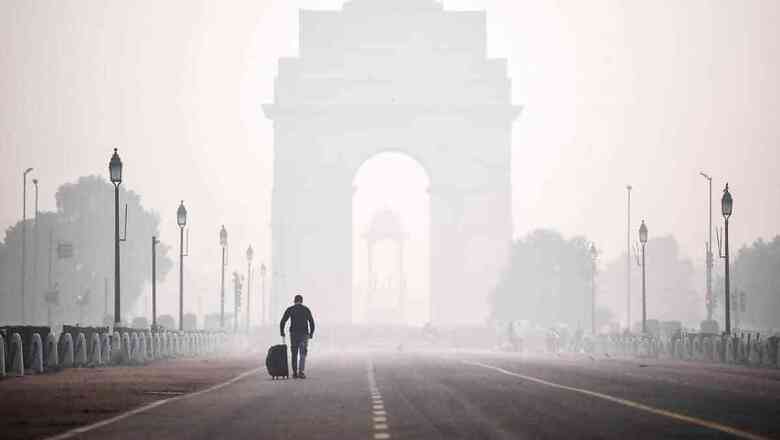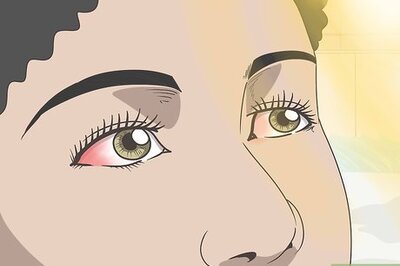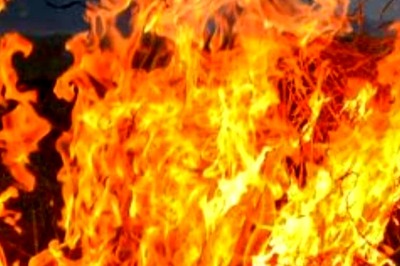
views
Delhi’s air quality remained in the “severe” category the morning after Diwali with blatant violations of the ban on firecrackers and stubble burning resulting in a thick layer of smog and poor visibility in several areas.
The overall air quality index (AQI) at 7am stood at 468 in the ‘severe’ category, the highest level of air pollution of the six-point measuring scale which categorises the air in ‘good’, ‘satisfactory’, ‘moderate’, ‘poor’, ‘very poor’ and ‘severe’ categories.
Delhi: Poor visibility in the national capital due to a rise in air pollutants; visuals from Civil Lines and ISBT areas. pic.twitter.com/klUOyCz1zB— ANI (@ANI) November 15, 2020
The level of PM2.5 pollutant, which is about 3% the diameter of a human hair and can lead to premature deaths from heart and lung diseases, was 271 micrograms per cubic metre, in the ‘hazardous’ category and just below the emergency threshold of 300 g/m3. The safe limit is 60 g/m3. The PM10 level stood at 408, lower than the emergency threshold of 500 g/m3. PM10 levels below 100 g/m3 are considered safe in India.
According to the Graded Response Action Plan (GRAP), the air quality is considered in the “severe plus” or “emergency” category if PM2.5 and PM10 levels persist above 300 g/m3 and 500 g/m3, respectively, for more than 48 hours.
Fear of the coronavirus and chronic pollution played spoilsport for millions on Diwali but some people defiantly set off traditional firecrackers in Delhi in spite of a ban imposed because of sky-high pollution levels.
With 8.7 million cases, India has the world’s second-highest coronavirus infection count behind the United States. About 130,000 people have died since February and Delhi is going through a new surge with nearly 8,000 new cases a day.
The National Green Tribunal (NGT) had imposed a total ban on sale or use of all kinds of firecrackers in the National Capital Region (NCR) from November 9 midnight to November 30 midnight. It had clarified that the direction will apply to all cities and towns in the country where the average of ambient air quality during November 2019 was in “poor” and above categories. But fireworks could be heard going off till later into the night on Saturday.
The Delhi Police arrested 10 people and registered 12 cases for sale of firecrackers in the national capital in violation of the ban. Police also registered 14 cases for bursting firecrackers — four in east, seven in northeast and three in northwest districts — during the day and 12 people were arrested, Additional PRO (Delhi Police) Anil Mittal said.
The 24-hour average AQI was 339 on Friday and 314 on Thursday. Delhi recorded a 24-hour average AQI of 337 on Diwali last year (October 27), and 368 and 400 in the next two days. Thereafter, pollution levels remained in the “severe” category for three days on the trot.
In 2018, the 24-hour average AQI (281) on Diwali was recorded in the “poor” category. It deteriorated to 390 the next day and remained in the “severe” category on three consecutive days thereafter. In 2017, Delhi’s 24-hour average AQI on Diwali (October 19) stood at 319. It, however, slipped into the “severe” zone the next day.
This time, the India Meteorological Department has said that a fresh western disturbance is likely to increase the wind speed and improve the air quality in Delhi-NCR after Diwali. Light rain is likely on Sunday under the influence of a western disturbance. It is still to be seen if it is enough to wash away pollutants, Kuldeep Srivastava, the head of the IMD’s regional forecasting centre, said.
Read all the Latest News, Breaking News and Coronavirus News here


















Comments
0 comment